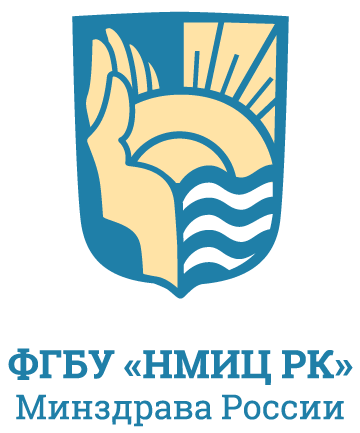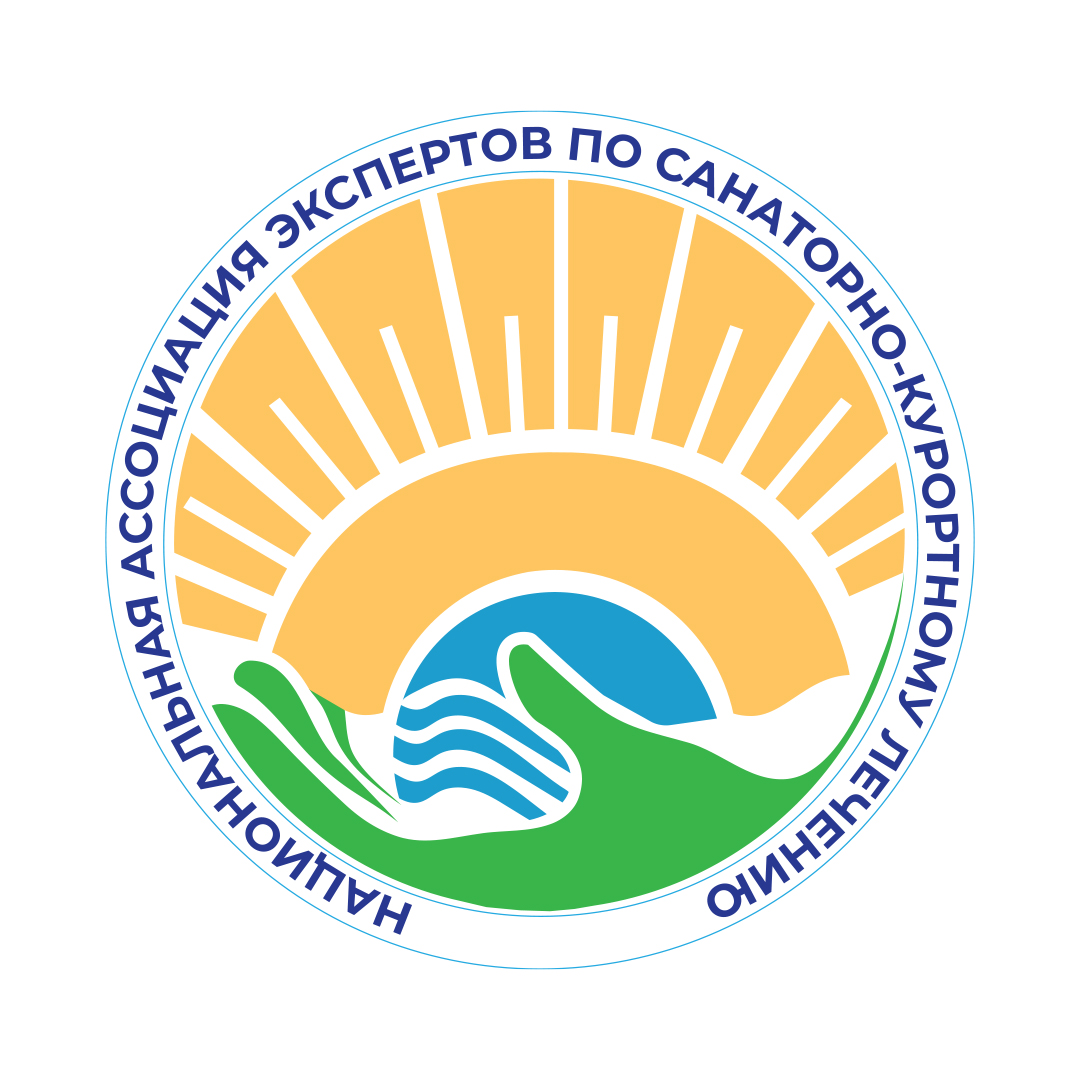Выпуск 24-3, 2025
Обзорная статья
Нейротрофические факторы как маркеры восстановления после инсульта: обзор
![]() Костенко Е.В.1,2,
Костенко Е.В.1,2,
![]() Петрова Л.В.1,3,
Петрова Л.В.1,3,
![]() Егоров П.Д.1,2,*,
Егоров П.Д.1,2,*,
![]() Погонченкова И.В.3,
Погонченкова И.В.3,
![]() Филиппов М.С.2
Филиппов М.С.2
1 Московский научно-практический центр медицинской реабилитации, восстановительной и спортивной медицины им С.И. Спасокукоцкого Департамента здравоохранения города Москвы, Москва, Россия
2 Российский национальный исследовательский медицинский университет им. Н.И. Пирогова, Москва, Россия
РЕЗЮМЕ
ВВЕДЕНИЕ. Значительная частота развития перинатального поражения (ПП) центральной нервной системы (ЦНС) и высокий риск его неблагоприятных исходов определяют актуальность медицинской реабилитации таких детей. Методы кинезиотерапии занимают ведущее место в системе реабилитационных мероприятий пациентов с ПП ЦНС. В последние годы неуклонно возрастает интерес к применению нейроразвивающей терапии по методу Бобат, направленной на коррекцию патологических двигательных стереотипов и формирование возрастных моторных навыков посредством сенсорной стимуляции проприорецепции.
ЦЕЛЬ. Изучить имеющиеся научные данные об эффективности применения Бобат-терапии в медицинской реабилитации детей, перенесших ПП ЦНС.
МАТЕРИАЛЫ И МЕТОДЫ. Поиск научных работ проводился по базам данных PubMed, Cochrane Library, eLIBRARY.RU с 2015 по 2025 гг. Были использованы следующие ключевые слова: нейроразвивающая терапия (neurodevelopmental therapy), Бобат- терапия (Bobath therapy), перинатальное поражение ЦНС (perinatal brain injury, hypoxic-ischemic encephalopathy), ДЦП (cerebral palsy), дети (children).
РЕЗУЛЬТАТЫ И ОБСУЖДЕНИЕ. В настоящее время Бобат-терапия является одной из наиболее часто используемых технологий в области нейрореабилитации. Представлены данные о ее положительном влиянии на мышечный тонус, функцию поддержания статического и динамического равновесия, двигательное развитие детей, проявление оральной моторной дисфункции, слюнотечение и функцию жевания.
ЗАКЛЮЧЕНИЕ. Данные литературы об эффективности применения Бобат-терапии у пациентов с ДЦП и ограниченное число работ, посвященных вопросам использования этого метода в медицинской реабилитации детей с ПП ЦНС на первом году жизни до формирования стойких двигательных нарушений, диктуют необходимость проведения дальнейших исследований в этом направлении.
КЛЮЧЕВЫЕ СЛОВА: нейроразвивающая терапия, Бобат-терапия, дети, перинатальное поражение центральной нервной системы, детский церебральный паралич, нейрореабилитация
ДЛЯ ЦИТИРОВАНИЯ:
Хан М.А., Костенко Е.В., Микитченко Н.А., Дегтярева М.Г., Шунгарова З.Х. Перспективы применения нейроразвивающей терапии у детей с перинатальным поражением центральной нервной системы: обзор. Вестник восстановительной медицины. 2025; 24(3):102–112. https://doi.org/10.38025/2078-1962-2025-24-3-102-112 [Khan M.A., Kostenko E.V., Mikitchenko N.A., Degtyareva M.G., Shungarova Z.H. Outlook for the Use of Neurodevelopmental Therapy in Children with Perinatal Central Nervous System Damage: a Review. Bulletin of Rehabilitation Medicine. 2025; 24(3):102–112. https://doi.org/10.38025/2078-1962-2025-24-3-102-112 (In Russ.).]
ДЛЯ КОРРЕСПОНДЕНЦИИ:
Микитченко Наталья Анатольевна, Е-mail: mikitchenko_nata@mail.ru, 6057016@mail.ru
Список литературы:
-
Xing Y., Bai Y. A Review of Exercise-Induced Neuroplasticity in Ischemic Stroke: Pathology and Mechanisms. Mol Neurobiol. 2020; 57(11): 4218–4231. https://doi.org/10.1007/s12035-020-02021-1
-
Skaper S. Neurotrophic Factors: An Overview. In: Skaper S., editor. Neurotrophic Factors: Methods and Protocols. New York, NY: Springer. 2018. p. 1–17. https://doi.org/10.1007/978-1-4939-7571-6_1
-
Brunelli S., Giannella E., Bizzaglia M., et al. Secondary neurodegeneration following Stroke: what can blood biomarkers tell us? Front Neurol. 2023; 14: 1038808. https://doi.org/10.3389/fneur.2023.1198216
-
He J., Chen L., Tang F., et al. Multidisciplinary team collaboration impact on NGF, BDNF, serum IGF-1, and life quality in patients with hemiplegia after stroke. Cell Mol Biol (Noisy-le-grand). 2023; 69(12): 57–64. https://doi.org/10.14715/cmb/2023.69.12.10
-
Hernández-del Caño C., Varela-Andrés N., Cebrián-León A., Deogracias R. Neurotrophins and Their Receptors: BDNF’s Role in GABAergic Neurodevelopment and Disease. Int J Mol Sci. 2024; 25(15): 8312. https://doi.org/10.3390/ijms25158312
-
Liu W., Wang X., O’Connor M., et al. Brain-derived neurotrophic factor and its potential therapeutic role in Stroke comorbidities. Neural Plast. 2020; 2020: 8107274. https://doi.org/10.1155/2020/1969482
-
Sims-Knight C., Wilken-Resman B., Smith C., et al. Brain-Derived Neurotrophic Factor and Nerve Growth Factor Therapeutics for Brain Injury: The Current Translational Challenges in Preclinical and Clinical Research. Neural Plast. 2022; 2022: 9830128. https://doi.org/10.1155/2022/3889300
-
Чуканова А.С., Гулиева М.Ш., Чуканова Е.И., Багманян С.Д. Применение сывороточных биомаркеров повреждения, апоптоза и нейротрофичности в оценке прогноза ишемического инсульта. Журнал неврологии и психиатрии им. С.С. Корсакова. Спецвыпуски. 2022; 122(8–2): 48–53. [Chukanova A.S., Gulieva M.Sh., Chukanova E.I., Bagmanyan S.D. A panel of serum biomarkers, including damage, apoptosis and neurotrophic markers, for the assessment of prognosis of the course of ischemic stroke. S.S. Korsakov Journal of Neurology and Psychiatry. 2022; 122 (8–2): 48–53. https://doi.org/10.17116/jnevro202212208248 https://doi.org/10.17116/jnevro202212208248 (In Russ.).]
-
Shahnawaz A., Varun Kumar S., Varshaa Ch., Rameshwar Nath Ch. Neurorehabilitation and its relationship with biomarkers in motor recovery of acute ischemic stroke patients — A systematic review. J Clin Sci Res. 2024; 13(2):125. http://dx.doi.org/10.4103/jcsr.jcsr_16_23
-
Ashcroft S., Ironside D., Johnson L., et al. Effect of Exercise on Brain-Derived Neurotrophic Factor in Stroke Survivors: A Systematic Review and Meta- Analysis. Stroke. 2022; 53(12): 3706–3716. https://doi.org/10.1161/strokeaha.122.039919
-
Karantali E., Kazis D., Papavasileiou V., et al. Serum BDNF Levels in Acute Stroke: A Systematic Review and Meta-Analysis. Medicina (Kaunas). 2021; 57(3): 297. https://doi.org/10.3390/medicina57030297
-
Mojtabavi H., Shaka Z., Momtazmanesh S., et al. Circulating brain-derived neurotrophic factor as a potential biomarker in stroke: a systematic review and meta-analysis. J Transl Med. 2022; 20(1): 233. https://doi.org/10.1186/s12967-022-03312-y
-
Zhou B., Mu K., Yu X., Shi X. Serum Levels and Clinical Significance of NSE, BDNF and CNTF in Patients with Cancer-associated Ischemic Stroke Complicated with Post-stroke Depression. Actas Esp Psiquiatr. 2024; 52(4): 474–483. https://doi.org/10.62641/aep.v52i4.1667
-
Liu X., Fang J.-C., Zhi X.-Y., et al. The Influence of Val66Met Polymorphism in Brain-Derived Neurotrophic Factor on Stroke Recovery Outcome: A Systematic Review and Meta-analysis. Neurorehabil Neural Repair. 2021; 35(6): 550–560. https://doi.org/10.1177/15459683211014119
-
Santoro M., Siotto M., Germanotta M., et al. BDNF rs6265 Polymorphism and Its Methylation in Patients with Stroke Undergoing Rehabilitation. Int J Mol Sci. 2020; 21(22): 8438. https://doi.org/10.3390/ijms21228438
-
Sukhan D., Liudkevych H., Olkhova I., et al. The role of neurotrophins in post-stroke rehabilitation. Rep Vinnytsia Nation Med Univ. 2021; 25(4): 651–656. https://doi.org/10.31393/reports-vnmedical-2021-25(4)-25
-
Ledreux A., Håkansson K., Carlsson R., et al. Differential Effects of Physical Exercise, Cognitive Training, and Mindfulness Practice on Serum BDNF Levels in Healthy Older Adults: A Randomized Controlled Intervention Study. J Alzheimers Dis. 2019; 71(4): 1245–1261. https://doi.org/10.3233/JAD-190756
-
Ploughman M., Eskes G., Kelly L., et al. Synergistic Benefits of Combined Aerobic and Cognitive Training on Fluid Intelligence and the Role of IGF-1 in Chronic Stroke. Neurorehabil Neural Repair. 2019; 33(3): 199–212. https://doi.org/10.1177/1545968319832605
-
Björkholm C., Monteggia L. BDNF — a key transducer of antidepressant effects. Neuropharmacology. 2016; 102: 72–79. https://doi.org/10.1016/j.neuropharm.2015.10.034
-
Cubillos S., Engmann O., Brancato A. BDNF as a Mediator of Antidepressant Response: Recent Advances and Lifestyle Interactions. Int J Mol Sci. 2022; 23(22): 14445. https://doi.org/10.3390/ijms232214445
-
Brunello C., Cannarozzo C., Castrén E. Rethinking the role of TRKB in the action of antidepressants and psychedelics. Trends Neurosci. 2024; 47(11): 865–874. https://doi.org/10.1016/j.tins.2024.08.011
-
Widodo J., Asadul A., Wijaya A., Lawrence G. Correlation between Nerve Growth Factor (NGF) with Brain Derived Neurotropic Factor (BDNF) in Ischemic Stroke Patient. Bali Med J. 2016; 5(2): 10. https://doi.org/10.15562/bmj.v5i2.199
-
Li X., Li F., Ling L., et al. Intranasal administration of nerve growth factor promotes angiogenesis via activation of PI3K/Akt signaling following cerebral infarction in rats. Am J Transl Res. 2018; 10(11):3481–3492.
-
Luan X., Qiu H., Hong X., et al. High Serum Nerve Growth Factor Concentrations Are Associated with Good Functional Outcome at 3 Months Following Acute Ischemic Stroke. Clinica Chimica Acta. 2019; 488: 20–24. https://doi.org/10.1016/j.cca.2018.10.030
-
Gu C.-L., Ma L., Hou Y., et al. Exploring the Cellular and Molecular Basis of Nerve Growth Factor in Cerebral Ischemia Recovery. Neuroscience. 2024; 566: 190–197. https://doi.org/10.1016/j.neuroscience.2024.12.049
-
Colitti N., Desmoulin F., Le Friec A., et al. Long-Term Intranasal Nerve Growth Factor Treatment Favors Neuron Formation in de Novo Brain Tissue. Front Cell Neurosci. 2022; 16: 871532. https://doi.org/10.3389/fncel.2022.871532
-
Moghanlou A., Yazdanian M., Roshani S., et al. Neuroprotective effects of pre-ischemic exercise are linked to expression of NT-3/NT-4 and TrkB/TrkC in rats. Brain Res Bull. 2023; 194: 54–63. https://doi.org/10.1016/j.brainresbull.2023.01.004
-
Chung J.-Y., Kim M.-W., Im W., et al. Expression of Neurotrophin-3 and TrkC Following Focal Cerebral Ischemia in Adult Rat Brain with Treadmill Exercise. J Korean Med Sci. 2017; 32(9): 1486–1492. https://doi.org/10.1155/2017/9248542
-
Chung J.-Y., Kim M.-W., Bang M.-S., Kim M. Increased Expression of Neurotrophin 4 Following Focal Cerebral Ischemia in Adult Rat Brain with Treadmill Exercise. PLoS One. 2013; 8(3): e52461. https://doi.org/10.1371/journal.pone.0052461
-
Cortés D., Carballo-Molina O., Castellanos-Montiel M., Velasco I. The Non-Survival Effects of Glial Cell Line-Derived Neurotrophic Factor on Neural Cells. Front Mol Neurosci. 2017; 10: 287. https://doi.org/10.3389/fnmol.2017.00258
-
Zhang Z., Sun G., Ding S. Glial Cell Line-Derived Neurotrophic Factor and Focal Ischemic Stroke. Neurochem Res. 2021; 46(10): 2638–2650. https://doi.org/10.1007/s11064-021-03266-5
-
Zhang N., Zhang Z., He R., et al. GLAST-CREERT2 Mediated Deletion of GDNF Increases Brain Damage and Exacerbates Long-Term Stroke Outcomes After Focal Ischemic Stroke in Mouse Model. Glia. 2020; 68(11): 2395–2414. https://doi.org/10.1002/glia.23848
-
Куракина А.С., Семенова Т.Н., Щелчкова Н.А. и др. Прогностическая значимость определения уровня глиального нейротрофического фактора в плазме крови у больных с ишемическим инсультом. Пермский медицинский журнал. 2021; 38(2):95–102. https://doi.org/10.17816/pmj38295-102 [Kurakina A.S., Semenova T.N., Shchelchkova N A. et al. The prognostic significance of determining the level of glial neurotrophic factor in blood plasma in patients with ischemic stroke. Perm Medical Journal. 2021; 38(2): 95–102. https://doi.org/10.17816/pmj38295-102 (In Russ.).]
-
Pasquin S., Sharma M., Gauchat J.-F. Cytokines of the LIF/CNTF Family and Metabolism. Cytokine. 2016; 82: 122–124. https://doi.org/10.1016/j.cyto.2015.12.019
-
Stansberry W., Pierchala B. Neurotrophic factors in the physiology of motor neurons and their role in the pathobiology and therapeutic approach to amyotrophic lateral sclerosis. Front Mol Neurosci. 2023; 16: 1238453. https://doi.org/10.3389/fnmol.2023.1238453
-
Jia C., Brown R., Malone H., et al. Ciliary Neurotrophic Factor Is a Key Sex-Specific Regulator of Depressive-Like Behavior in Mice. Psychoneuroendocrinology. 2019; 100: 96–105. https://doi.org/10.1016/j.psyneuen.2018.09.038
-
Hayes C., Valcarcel-Ares M., Ashpole N. Preclinical and clinical evidence of IGF-1 as a prognostic marker and acute intervention with ischemic stroke. J Cereb Blood Flow Metab. 2021; 41(10): 2475–2491. https://doi.org/10.1177/0271678x211000894
-
Mehrpour M., Rahatlou H., Hamzehpur N., et al. Association of insulin-like growth factor-I with the severity and outcomes of acute ischemic stroke. Iran J Neurol. 2016; 15(4): 214–218.
-
Armbrust M., Worthmann H., Dengler R., et al. Circulating Insulin-like Growth Factor-1 and Insulin-like Growth Factor Binding Protein-3 predict Three-months Outcome after Ischemic Stroke. Exp Clin Endocrinol Diabetes. 2017; 125(7): 485–491. https://doi.org/10.1055/s-0043-103965
-
Aberg N., Aberg D., Jood K., et al. Altered Levels of Circulating Insulin-Like Growth Factor I (IGF-I) Following Ischemic Stroke Are Associated with Outcome — A Prospective Observational Study. BMC Neurol. 2018; 18: 106. https://doi.org/10.1186/s12883-018-1107-3
-
Neeraj S., Limaye L., Braighi Carvalho L., Kramer S. Effects of Aerobic Exercise on Serum Biomarkers of Neuroplasticity and Brain Repair in Stroke: A Systematic Review. Arch Phys Med Rehabil. 2021; 102(8): 1633–1644. https://doi.org/10.1016/j.apmr.2021.04.010
-
Guo D., Zhu Z., Zhong C., et al. Increased Serum Netrin-1 Is Associated with Improved Prognosis of Ischemic Stroke: An Observational Study from CATIS. Stroke. 2019; 50(4): 845–852. https://doi.org/10.1161/strokeaha.118.024631
-
Xu T., Zuo P., Wang Y., et al. Serum Omentin-1 Is a Novel Biomarker for Predicting the Functional Outcome of Acute Ischemic Stroke Patients. Clin Biochem. 2018; 56:350–355. https://doi.org/10.1515/cclm-2017-0282
-
Tiedt S., Duering M., Barro C., et al. Serum Neurofilament Light: A Biomarker of Neuroaxonal Injury After Ischemic Stroke. Neurology. 2018; 91(14): e1338–e1347. https://doi.org/10.1212/wnl.0000000000006282
-
Gao L., Xie J., Zhang H., et al. Neuron-Specific Enolase in Hypertension Patients with Acute Ischemic Stroke and Its Value Forecasting Long-Term Functional Outcomes. BMC Geriatr. 2023; 23(1): 294. https://doi.org/10.1186/s12877-023-03986-z

Контент доступен под лицензией Creative Commons Attribution 4.0 License.
©
Эта статья открытого доступа по лицензии CC BY 4.0. Издательство: ФГБУ «НМИЦ РК» Минздрава России.




